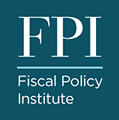Fact Sheet: The 2026 Executive Budget’s Fiscal Outlook
The executive budget makes significant upward revisions to its expected revenue for both the current and upcoming fiscal years (fiscal years 2025 and 2026, respectively), raising anticipated tax receipts by $4.6 billion and $4.1 billion from the levels projected in the fiscal year 2025 enacted budget financial plan. Strong personal income tax receipts drive higher-than-anticipated revenue.
